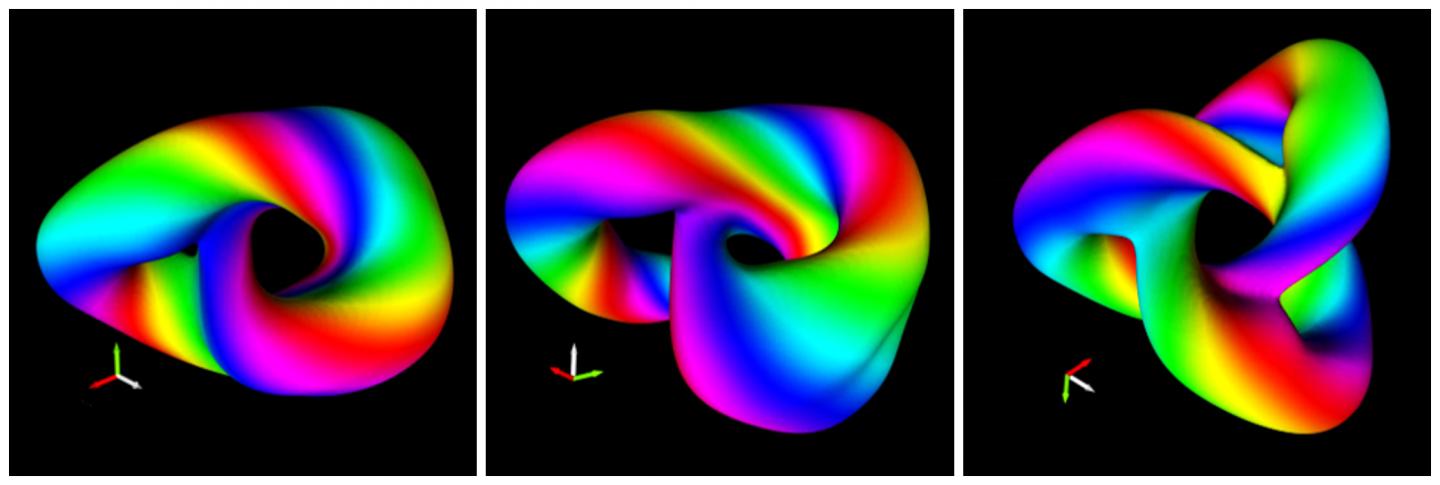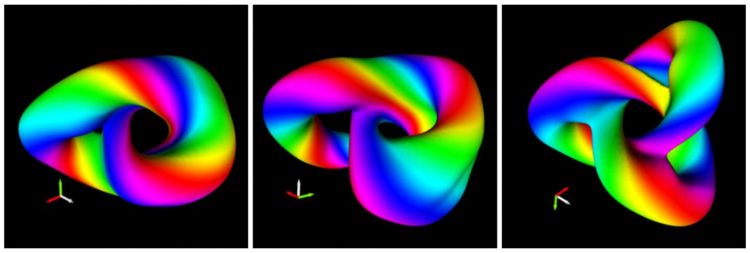
Credit: Copyright: Forschungszentrum Jülich
The physicists Prof. Rafal Dunin-Borkowski and Prof. Stefan Blügel from Forschungszentrum Jülich have successfully obtained a Synergy Grant from the European Research Council (ERC). In the “3D MAGiC” project, together with Prof. Mathias Kläui from the University of Mainz and Prof. Theo Rasing from the Radboud University in Nijmegen, they will explore still largely-unknown nanoscale 3D magnetic structures, which show particle-like properties and whose existence has so far only been predicted theoretically. The grant is awarded for groundbreaking projects which, due to their complexity, cannot be carried out alone but only by a team. The researchers have been awarded 11.8 million euros over six years.
Questions such as how particles emerge into the world, what their properties are and how they interact in external fields are central topics in physics. They are relevant in subjects that range from astronomical dimensions, where they apply to stars, exoplanets and black holes in gravitational fields, to the subatomic scales of elementary particles. Between these dimensions are atoms, molecules and other nanoscale particles, such as so-called topological solitons, which are subject to the laws of quantum mechanics and electromagnetism.
The three-dimensional magnetic solitons that the joint team of experimentalists and theoreticians will investigate in their ERC Synergy Grant are considered to be extremely challenging (research) (objects for research). These 3D vortices appearing only inside magnetic solids may vary from about several hundred nanometers up to only a few nanometers in size. Remarkably, much less is known about them than, for example, about black holes in the universe.
“The first magnetic vortices that were detected can be regarded as two-dimensional objects. We are now at a threshold where it will be possible to experimentally study three-dimensional vortex-like structures. One of our goals is to extend our methods of electron holography for this purpose,” explains Prof. Rafal Dunin-Borkowski, principal investigator of the project and Director of the Ernst Ruska-Centre and the Peter Grünberg Institute (PGI-5) in Forschungszentrum Jülich.
The facility in Jülich is an institution at the forefront of the field of electron microscopy, where specialists are capable of resolving magnetic structures that have sizes of just a few nanometers. Two years ago, in cooperation with theoretical physicists led by Prof. Stefan Blügel, they were able to study magnetic skyrmions. “That was basically the starting point. We realized that, according to our theory, there should be more complicated 3D magnetic particles. We have predicted them but haven’t found them yet – there’s practically nothing known about them. But that’s what the project is about,” explains Stefan Blügel, Director at the Institute for Advanced Simulation (IAS-1) and the Peter Grünberg Institute (PGI-1) in Forschungszentrum Jülich.
Peter Grünberg, after whom the institute is named, was awarded the Nobel Prize for the discovery of a concept in magnetism that is fundamental to the functioning of today’s hard disks, in which magnetization modifies the electrical resistance of a material. In recent years, Stefan Blügel and his team have taken a step further in their research into minute structures such as magnetic skyrmions and their three-dimensional counterparts. They intend to use three-dimensional magnetic-vortex-like structures, which are only a few nm in size, as information carriers. They promise to be not only extremely space-saving, but also require very little energy when electrical currents are used to move them around.
In “3D MAGiC”, the researchers want to investigate particles that may have an even greater potential. Among other things, the focus is on so-called hopfions: “These novel particles can be imagined as twisted or knotted shoelaces. The more loops they contain, the higher the Hopf number,” says Stefan Blügel.
These objects are interesting for future applications: According to theoretical considerations, the Hopf number can assume many different values, which makes them highly effective as information carriers. If many such particles are collected in a material, then a large store of information can be created. Their spatial extent makes it possible to cross-link them in a variety of ways via spin waves in all three spatial dimensions – a concept that cannot be realized in two dimensions. For this reason, hopfions may be suitable candidates for innovative approaches in the field of neuromorphic computing, taking inspiration from the human brain, which is very highly connected.
In order to come closer to this goal, the Jülich researchers have joined forces in “3D MAGiC” with Prof. Mathias Kläui from the University of Mainz and Prof. Theo Rasing from the Radboud University in Nijmegen in The Netherlands. Theo Rasing is a specialist in the ultrafast manipulation and characterization of magnetic nanostructures using laser pulses and will, among other things, investigate how lasers can be used for unconventional computing using 3D nanoscale particles such as hopfions. Mathias Kläui has outstanding expertise in the production of magnetic heterostructures, which make it possible to develop materials that have specific magnetic particles, whose dynamics he investigates with the aid of electrons and X-rays.
Prof. Xiaoyan Zhong from Tsinghua University in Beijing, China, is also involved as a non-European partner and has already contributed to the development of novel electron microscopy methods in collaboration with the Ernst Ruska-Centre in Jülich. Within the framework of the ERC Synergy Grant, he will continue to work together with the experts in Jülich on an extension of these methods.
###
Media Contact
Tobias Schlößer
[email protected]
49-246-161-4771
Original Source
https:/





